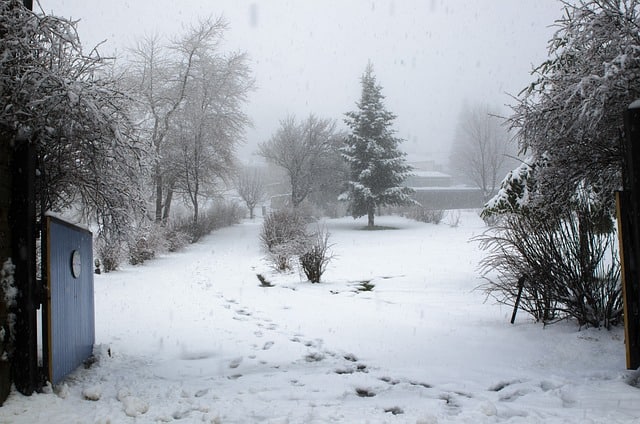Composting in the winter can be a bit more challenging than composting during the warmer months, but it’s definitely possible to keep your compost pile active even in the colder weather. Here are a few tips to help you do just that:
- Insulate your compost pile: One of the biggest challenges of composting in the winter is keeping your pile warm enough to encourage the microorganisms that break down organic matter to continue working. Insulating your pile with straw or leaves can help trap heat and keep the pile active.
- Add more carbon-rich materials: During the winter, it’s important to add more carbon-rich materials like leaves and straw to your pile to balance out the nitrogen-rich materials like food scraps and grass clippings. This will help keep the pile active and prevent it from becoming too wet. We’ll list more popular materials below so keep reading!
- Keep the pile moist: Even though it’s cold outside, your compost pile still needs to be moist to encourage the microorganisms to break down the organic matter. Make sure to add enough water to keep the pile damp, but not so much that it becomes waterlogged. Used coffee grounds are moist and may help too.
- Turn the pile: Turning your pile regularly is important to ensure that all the materials get broken down evenly and to help it avoid freezing. This will also help to aerate the pile, which is essential for the microorganisms to survive. Use a pitchfork, shovel or other tool to turn the pile.
- Cover the pile: Covering your compost pile with a tarp or plastic sheet can help keep the heat in and keep the pile active. It can also help to keep any birds or other animals away if that’s a problem. If you have a commercial compost bin with a sealed lid, you won’t have this problem.
Materials to add to compost piles in winter
During the winter months, it’s best to focus on adding carbon-rich materials to your compost pile to balance out the nitrogen-rich materials. Some examples of carbon-rich materials that can be added to a compost pile during the winter include:
- Dry leaves: These are an excellent addition to a compost pile, as they provide a lot of carbon and help to absorb excess moisture. Collect these in the autumn as they fall to the ground and add them to the pile as you accumulate them so they start decomposing right away.
- Straw: Straw is another great carbon-rich material that can be added to a compost pile. It’s especially useful for insulating the pile and keeping it warm.
- Wood chips or sawdust: These materials provide a lot of carbon and can help to balance out the nitrogen-rich materials in the pile.
- Shredded paper or cardboard: Both of these materials can be added to a compost pile and help to balance out the nitrogen-rich materials and absorb excess moisture.
Food scraps to add/avoid to compost piles in winter
You can add cooked food scraps, eggshells, or coffee grounds which will decompose quickly. It’s best to avoid adding any fresh (i.e. uncooked) food scraps during cold months, as they can freeze and take a long time to thaw and break down.
In addition, it’s best to avoid adding any meat, dairy or oily foods to the compost pile as these can attract pests and create unpleasant smells.
It is also important to keep in mind that during the cold months, the decomposition process will be slower than during the warmer months, so it may take longer to see results. However, with patience and care, you’ll have rich, nutrient-dense compost to add to your garden in the spring.
Summary
By following these tips, you can keep your compost pile active even in the winter. Remember that composting is a slow process, so don’t expect to see results overnight. With patience and care, you’ll have rich, nutrient-dense compost to add to your garden in the spring.
And what if you have a smaller space to work with because you live in a condo or apartment?
Check out my article called Composting in Cold Climates: Indoor and Outdoor Options For Condo Dwellers.


